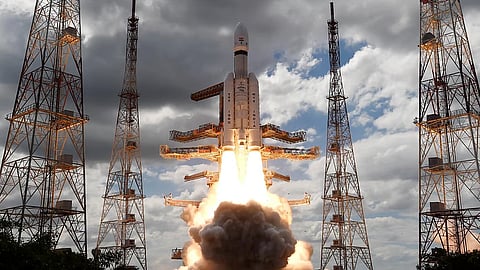

BENGALURU: Researchers from Indian Space Research Organisation (ISRO) on Thursday shared the latest update on the Chandrayaan-3 mission.
The ISRO team said the Propulsion Module (PM) of Chandrayaan-3 has entered the Moon Sphere of Influence (MSI), the region around the moon where gravity is at the optimum, which affects all objects around it.
ISRO said the PM entered the MSI on November 4, and at 7.23 UT on November 6, the first lunar flyby event was reported.
This is outside Indian Deep Space Network’s (IDSN) visibility range of 3740km from the Moon’s surface.
The teams added that the second subsequent flyby event was visible from the IDSN on November 11. Here, the closest distance from the Moon’s surface was noted to be 4537km at 23.18 UT.
“Chandrayaan-3’s PM is expected to exit the Moon’s Sphere of Influence on November 14,” ISRO scientists said.
The aim of the Chandrayaan-3 mission is to demonstrate safe and soft landing on the Moon’s surface, besides Rover roving on the Moon and to conduct in-situ experiments.
The satellite was launched on-board the LVM3 from Satish Dhawan Space Centre, Sriharikota, on July 14, 2023. After landing on the Moon on August 23, the PM was operated in its lunar orbit at an altitude of nearly 150km till October 2023.
The PM was then relocated to a high-altitude Earth-bound orbit by executing Trans-Earth Injection (TEI) manoeuvres in October 2023.
Since then, the PM has been revolving in this orbit under the influence of the Earth’s and Moon’s gravity fields.
ISRO researchers explained that the satellite’s orbit and inclinations have changed due to the ongoing flyby events around the Moon’s orbit.
The flyby event trajectory is being closely monitored by the ISRO Telemetry, Tracking and Command Network (ISTRAC).
Special care is also being taken to monitor its trajectory and close proximities from the Beyond Earth Space Objects, the scientists said.
“Overall the satellite’s performance is normal during the flyby and no close approach has been experienced with other lunar orbiters. This event garners valuable insights and experience from mission planning, operations, flight dynamics perspectives and has specially enhanced the understanding of disturbance torques effects,” the scientists noted.
